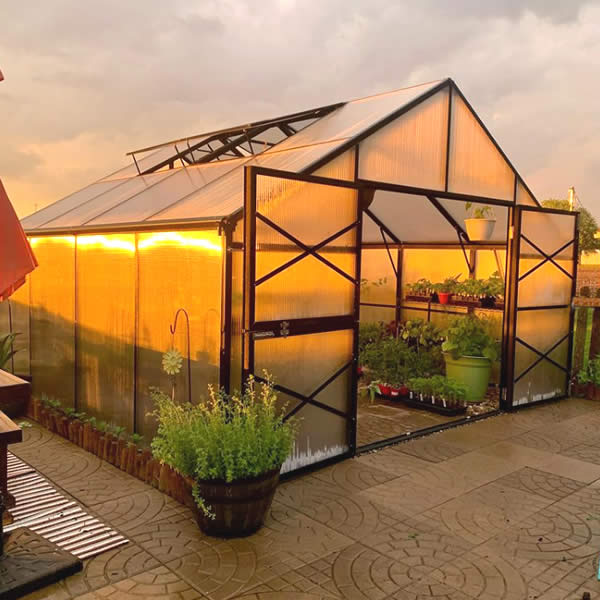Monarch Greenhouse Utah: Boosting Growing Rooms with Accuracy Construction
Wiki Article
The Future of Greenhouses: Advancements in Lasting Agriculture
Are you curious concerning the future of greenhouses and just how they are revolutionizing lasting agriculture? From sophisticated climate control systems to upright farming strategies, water-efficient irrigation methods, renewable power combination, and clever information analytics, these innovations are transforming the method we grow our food.Advanced Environment Control Systems
To attain ideal expanding problems, you can depend on the innovations in greenhouses with sophisticated environment control systems. These systems have actually changed the means we cultivate crops, providing a controlled setting that contributes to plant development. With these cutting-edge systems, you can currently adjust temperature level, humidity, light levels, and even CO2 focus to create the best problems for your plants to grow.Among the key functions of these sophisticated environment control systems is their capability to regulate temperature. By using sensing units and automated controls, the greenhouse can change the temperature based upon the certain needs of the plants. This ensures that they are never exposed to severe warm or chilly, which can be destructive to their growth.
Humidity control is one more essential aspect of these systems. By preserving the perfect humidity levels, you can protect against issues such as mold and mildew, mildew, and disease from influencing your plants. These systems can likewise manage the quantity of light that reaches the plants, making sure that they obtain the optimal amount for photosynthesis.
Furthermore, progressed environment control systems can even control carbon dioxide focus. By raising the degrees of carbon dioxide in the greenhouse, you can enhance plant development and performance. This is especially helpful in areas with reduced natural CO2 degrees.
Upright Farming Techniques
One vital upright farming technique is making use of piled expanding systems. Monarch Greenhouse Utah. These systems include arranging plants in several layers, vertically piled on top of each other. By utilizing vertical area, farmers can optimize their crop return without needing extra land. Stacked expanding systems are commonly used in metropolitan areas where room is limited.One preferred method is recognized as vertical hydroponics, where plants are grown in nutrient-rich water without soil. This strategy is highly efficient as it minimizes water usage by approximately 90% compared to typical farming methods. Furthermore, because the plants are expanded inside, they are shielded from diseases and bugs, reducing the need for pesticides.
One more strategy is aeroponics, which involves suspending the plant origins in a haze or air environment. This technique enables optimal nutrient absorption and oxygenation, leading to faster development and greater returns. Aeroponics additionally uses much less water than standard farming and can be carried out in upright systems, making it a prominent selection for upright farming.
Water-efficient Watering Approaches
When it comes to implementing water-efficient watering methods in lasting farming,Making the most of water conservation is necessary. With worldwide water scarcity becoming a pressing concern, it is critical to develop ingenious techniques that maximize water use in greenhouse procedures.One promising technique is drip irrigation, which supplies water straight to the plant roots, reducing waste and dissipation. By utilizing a network of tubes with small emitters, water is used slowly and exactly, making certain that plants obtain the necessary wetness without excess runoff.
Another effective method is using soil dampness sensing units. These tools determine the wetness web content in the dirt and provide real-time information to farmers. By keeping an eye on the dirt's wetness levels, farmers can accurately figure out when and just how much water to apply, avoiding over-irrigation.
Furthermore, the execution of rain harvesting systems is obtaining popularity in greenhouse agriculture. Accumulating rain from roofs and saving it in containers enables farmers to use this natural deposit for watering functions, reducing reliance on traditional water sources.
Finally, the adoption of automated irrigation systems can dramatically enhance water efficiency. These systems use sensing units to discover soil wetness degrees and weather, readjusting watering timetables appropriately. By enhancing water usage based on actual plant requirements, these systems can decrease water waste and promote sustainable farming techniques.
Renewable Power Integration
Sustainable official statement power combination in greenhouses offers numerous advantages, consisting of minimized running expenses and decreased reliance on non-renewable energy resources. The produced power can then be used to run various procedures within the greenhouse, such as home heating, lighting, and ventilation systems. These turbines harness wind power and transform it right into power, which can be utilized to supplement the energy needs of the greenhouse.Smart Data Analytics and Automation
To improve the performance of your greenhouse operations and enhance source use, consider applying smart data analytics and automation. Smart information analytics entails collecting and examining information from different sensing units and devices within your greenhouse.
This can include automating the control of lighting, air flow, watering systems, and nutrient distribution. By automating these procedures, you can make sure that your plants receive the appropriate conditions and nutrients at the appropriate time, without the check my reference need for continuous hand-operated intervention.
Furthermore, clever data analytics and automation can interact synergistically. The data collected by sensors can be utilized to educate computerized systems, permitting them to make real-time modifications based upon the existing problems. This integration of information analytics and automation can result in extra reliable and specific source allowance, inevitably causing greater returns and much better crop quality.
Verdict
In verdict, the future of greenhouses in sustainable farming looks appealing. With sophisticated environment control systems, vertical farming techniques, water-efficient watering methods, and renewable resource combination, greenhouses are ending up being more environmentally pleasant and reliable. In addition, the usage of smart data analytics and automation even more improves performance and decreases waste. These technologies are leading the way for a much more sustainable and effective agricultural industry, making certain a greener and healthier future for all.
By maximizing water usage based on actual plant needs, these systems can lower water waste and promote sustainable farming techniques.

Report this wiki page